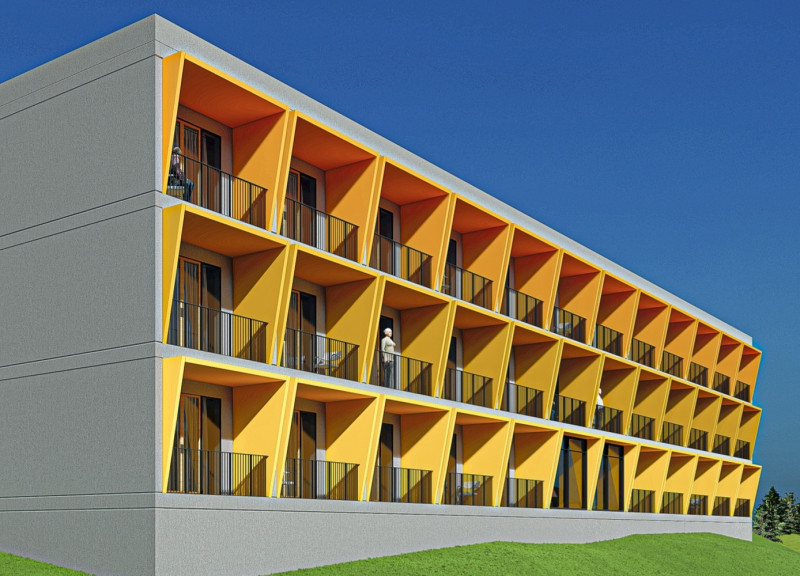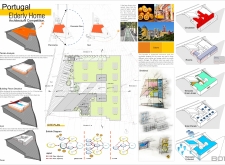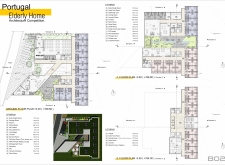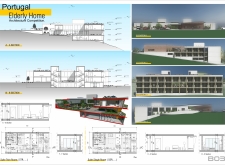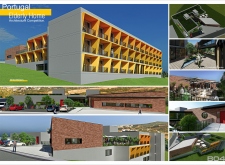5 key facts about this project
## Project Overview
The elderly home located in Portugal is designed to meet contemporary standards of accessibility, sustainability, and community engagement. Situated in a thoughtfully selected area, the structure addresses the specific needs of elderly residents while fostering an environment conducive to social interaction and well-being.
## Spatial Strategy
The design is influenced by the site's natural topography, featuring a split-level arrangement that adapts to the 0.91-meter elevation difference. This layout consists of a single-story section alongside a two-story block, providing diverse living options while ensuring privacy and serenity. The arrangement of communal and private areas facilitates a sense of community, with accommodations designed for both single and twin occupancy. Strategic setbacks from the road enhance the residents' sense of security and tranquility.
## Materiality and Sustainability
The material selection reflects the regional vernacular while integrating modern design elements. Exposed concrete forms the structural backbone, offering durability and a contemporary aesthetic, while brick surfaces contribute warmth and texture to communal areas. Sustainable features include green roofs for rainwater management, high-performance glazing for thermal efficiency, and strategically placed solar panels to harness renewable energy. Complementing this, rainwater collection systems further underscore a commitment to ecological integrity, enhancing the occupants' quality of life.
### Unique Features
Integrative design elements include a community garden and water features that promote social interaction and connect residents to nature. Additional design considerations optimize views from both common spaces and private suites, enhancing the living experience through visual access to the surrounding landscape. The building's functional layout includes communal dining and activity areas on the ground floor, with private suites on the upper levels, each designed for ease of navigation and comfort, ensuring that residents' needs are prioritized.


